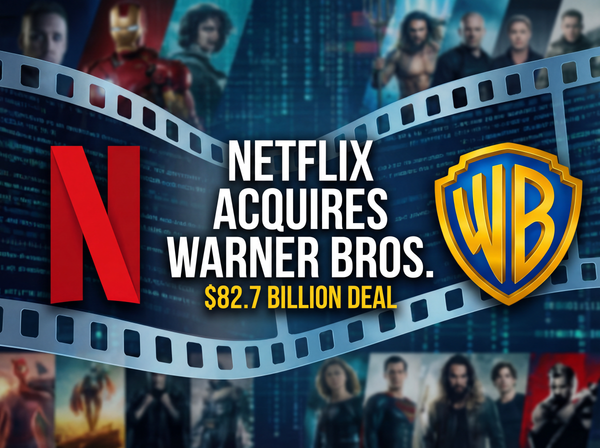The Different Sources of Acquisition Opportunities
Where do M&A opportunities come from?
It doesn’t always start with a company putting itself up for sale. Sourcing M&A deals is a complex, multi-dimensional process.
Here’s an overview of the primary sources and types of M&A deals:
1. Off-Market Deals (Including Proprietary/Inbound Interest)
Off-market deals refer to transactions that occur without a public listing or broad, competitive auction process. This includes both proactive buyer outreach and unsolicited inbound interest—essentially the same phenomenon from different perspectives.
How they originate: These deals typically arise through:
- Direct relationships and extensive networking by corporate development teams or buy-side advisors
- Proactive research and targeted outreach to potential sellers
- Unsolicited inquiries from potential buyers attracted by a company's performance, innovation, or market position
- Backdoor channels through advisors with strong industry relationships
The seller may not have been actively looking to sell but is either approached by a motivated buyer who sees strong strategic fit, or finds themselves fielding inbound interest from multiple parties.
Advantages:
- Less competition, potentially more favorable valuation and terms for the buyer
- Ability to build deeper relationships between buyer and seller
- Greater control over timing and process
- More confidential transaction process
- Greater flexibility in deal structuring
Disadvantages:
- Requires significant proactive effort and patience from buyers
- Sellers may not have fully prepared their business for sale, leading to more extensive diligence work
- Higher risk of deal falling through due to lack of competitive pressure
- Sellers entertaining only single offers risk leaving money on the table
- Can be harder for buyers to identify and access opportunities
2. Semi-Proprietary Deals
This falls somewhere between a fully proprietary deal and a formal auction—essentially a limited auction approach.
How they originate: A seller or their advisor approaches a very select group (typically 3-8) of highly relevant buyers, often based on specific strategic fit or existing relationships, without opening it up to a broad auction.
Advantages:
- More controlled process than a full auction
- Still allows for some competitive tension
- Can lead to quicker close than broad auction
- Higher likelihood of strategic fit
Disadvantages:
- Less competitive tension than broad auction, potentially leading to lower valuation for the seller
- Buyers still face some competition, unlike true proprietary deals
3. Auction Processes (Sell-Side Mandates)
This is the most common and structured method for selling companies, typically run by investment banks or M&A advisory firms.
How they originate: A company hires an investment bank to manage the sale. The bank prepares marketing materials (teaser, confidential information memorandum), identifies a wide pool of potential buyers (both strategic and financial), solicits bids, manages due diligence, and negotiates the sale on behalf of their client.
Most Common Company Size: Formal auction processes are overwhelmingly common for middle-market companies ($25M-$500M in value) and almost universal for large corporate transactions ($500M+). For smaller businesses, the cost of running a full auction may be prohibitive.
Advantages:
- For sellers: maximizes valuation through competitive bidding and provides controlled, professional process
- For buyers: offers clear path to evaluate opportunity with structured timeline and comprehensive information
Disadvantages:
- Highly competitive for buyers, often leading to higher purchase prices and stricter terms
- For sellers: demanding and time-consuming process with significant upfront costs
- Less flexibility in deal structure due to standardized process
4. Business Brokers
For smaller and lower-middle-market businesses, business brokers play a vital role in connecting buyers and sellers.
How they originate: They specialize in facilitating transactions, often on a regional or localized basis, for companies that are too small for traditional investment banks.
Most Common Company Size: Business brokers primarily handle companies ranging from under $1M to typically $25M in value, with the sweet spot being $1M-$10M transactions.
Advantages:
- More accessible and cost-effective for smaller businesses
- Local market expertise and relationships
- Simplified process appropriate for smaller deals
Disadvantages:
- Smaller network of qualified buyers compared to investment banks
- Limited strategic advisory capabilities
- Less sophisticated marketing and due diligence processes
5. Broken Auctions / Re-engagement
Not all auction processes conclude successfully. A broken auction occurs when a formal sale process fails to result in a signed deal.
How they originate: Deals might break down due to valuation gaps, due diligence issues, financing complications, regulatory concerns, or changing market conditions. When an auction breaks, the seller may re-engage with previously interested parties or seek new buyers.
Advantages:
- For buyers: opportunity to acquire a company that has undergone significant diligence, often at more attractive pricing
- For sellers: second chance to find a buyer with lessons learned from first process
Disadvantages:
- Buyers may be cautious, assuming significant issues caused the breakdown
- Sellers may be perceived as damaged goods with reduced negotiating power
- Additional time and costs for all parties
Market Trends and Considerations
Industry Consolidation: In fragmented industries, larger players often proactively seek acquisition targets, leading to more proprietary and off-market opportunities.
Economic Cycles: During uncertain economic periods, sellers may prefer confidential, off-market processes to avoid market signaling risks.
Technology and Innovation: Fast-moving sectors often see more inbound interest and proprietary deals as companies race to acquire new capabilities.
Conclusion
The M&A landscape offers a rich variety of sourcing channels, each with distinct advantages and challenges. From highly structured auctions that maximize competitive tension to discreet proprietary approaches that prioritize strategic fit, understanding these diverse pathways is critical for both sellers looking to maximize value and buyers seeking strategic growth opportunities.
The most successful M&A participants employ a multi-faceted approach, combining proactive direct outreach with active market monitoring and readiness to engage with unexpected inbound opportunities. The key is matching the right sourcing strategy to the specific circumstances, objectives, and market conditions at hand.



